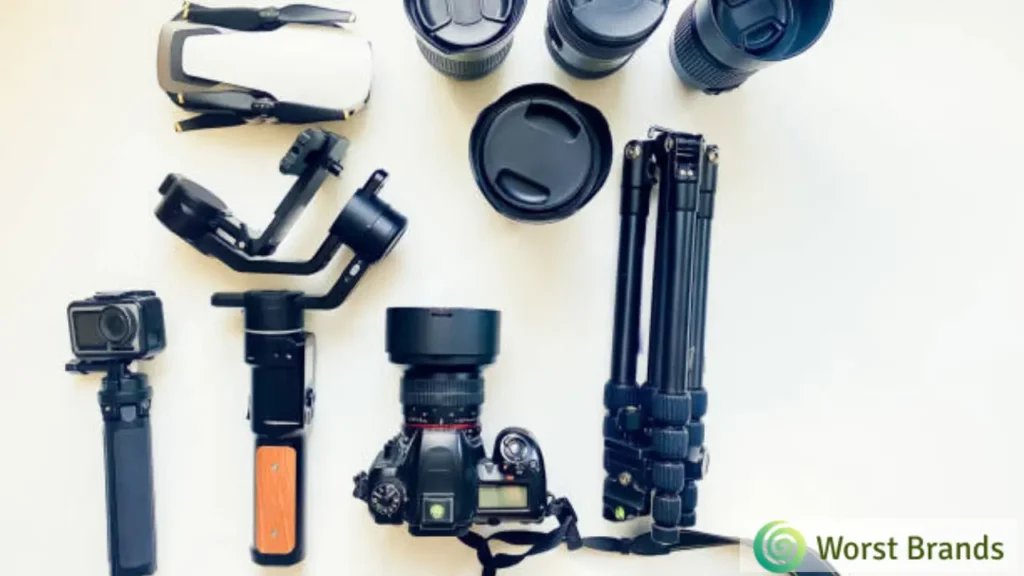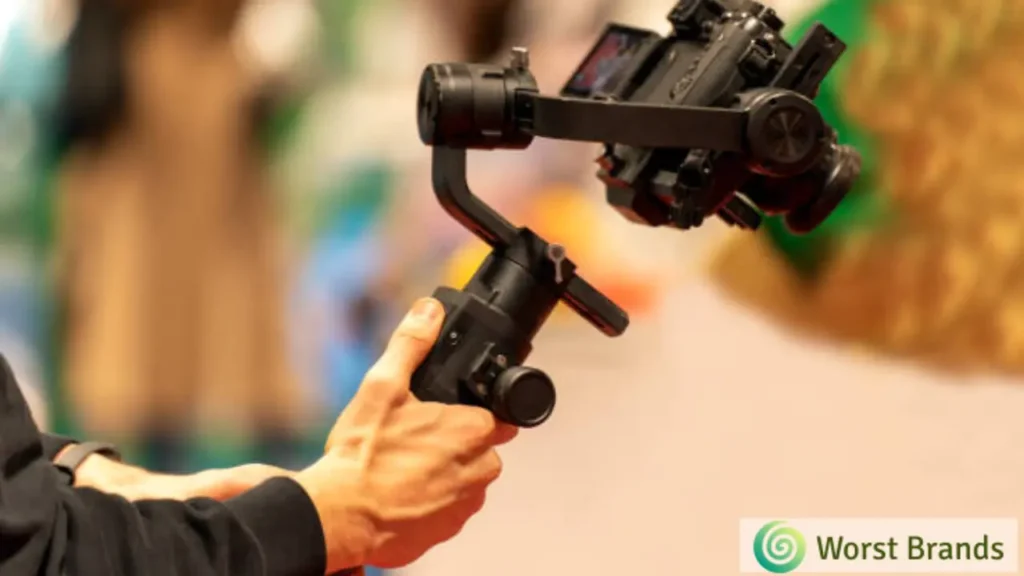In the vast digital realm of cinematography and videography, a gimbal is more than just a piece of equipment; the magic wand transforms shaky footage into cinematic art.
But as an expert who has used camera stabilization technology for years, I’ve seen the good, the bad, and the downright ugly.
Today, we’ll talk about the worst gimbal brands on the market. Why? Because knowing what to avoid can be just as crucial as knowing what to embrace.
Strap in because this might just be the most important guide you read before making your next purchase.
Table of Contents
Worst Gimbal Brands
From poor battery life and reliability to software issues, the worst gimbal brands to avoid are XbotGo, SelfieShow, FeiyuTech, Hohem, and Zhiyun.

1. XbotGo Sports Gimbal
The XbotGo Sports Gimbal promised a revolution in the way we record sports, particularly basketball and soccer.
Advertised for its AI-driven automatic shooting capabilities, I was genuinely excited to give this gimbal a whirl.
The notion of an “unmanned operation” seemed perfect for capturing fast-paced sports.
Unfortunately, the reality fell short of expectations. For those who use their phones extensively for recording, this issue is similar to the challenges posed by some underwhelming smartphones.
Instead of the targeted tracking I anticipated, the gimbal appeared easily distracted, often diverting its focus to nearby movements that weren’t central to the game.
It’s particularly troubling when it fails to center on the ball during crucial moments, making the resulting footage chaotic and, at times, irrelevant.
While it did amusingly track the referee a few times, this wasn’t what I had in mind!
Some of the gimbal’s design elements, including unexplained lights and buttons, also puzzled me.
The accompanying user manual lacked depth, offering no troubleshooting guidance for the erratic behavior I observed.
Battery longevity also proved challenging, depleting faster than I anticipated.
This experience taught me that you often get what you pay for. Sometimes, it’s worth investing a bit more for a tool that genuinely delivers.
2. SelfieShow Gimbal Stabilizer
I recently purchased the SelfieShow Gimbal Stabilizer, drawn by its seemingly attractive features like the 360° automatic rotation.
But, regrettably, this turned out to be among the worst gimbal stabilizers I’ve encountered.
Bluetooth connectivity was a nightmare from the start. The associated app, “Gimbal,” constantly malfunctioned, turning off abruptly during critical recording moments.
Although it promised compatibility across devices, I couldn’t pair it with my Googe Pixel 6.
Battery longevity was another pain point, rendering the gimbal unusable in a mere quarter-hour after a full charge.
And the 360° spin? It’s more of an irregular twirl.
Finally, the stark difference between the marketed image and the received product was a jarring testament to its poor quality.

3. FeiyuTech
FeiyuTech’s G6 Max 3-Axis Handheld Gimbal Stabilizer offers a broad compatibility range, from mirrorless cameras to smartphones.
However, some users have encountered challenges with its stability, particularly when paired with cameras such as the Sony a7.
Battery longevity is another concern, with reports of rapid depletion after limited usage.
For smartphone enthusiasts, especially iPhone users, the gimbal’s lack of a lightning cable can be a drawback.
Stability issues persist, with random motor fits affecting both video and audio outputs.
Additionally, the device’s weight may not be ideal for prolonged use, as it could strain the user’s arms.
The accompanying app has received mixed feedback, with users pointing out its slow responsiveness and occasional glitches.
Given these considerations, you should definitely avoid this gimbal brand.
4. Hohem iSteady
Next on our list of bad gimbal stabilizers is Hohem iSteady. One recurring concern is its ability to manage the weight of heavier smartphones, particularly models like the iPhone 14 Pro.
This has led to some reports of phones flipping and, in some instances, even damage.
Despite its higher price point, its build quality and performance seem to be on par with more affordable models available in the market.
Another issue that users have pointed out is the device’s tendency to power off unexpectedly during recording sessions, which can be a significant disruption.
The necessity of using a dedicated app for optimal performance is another aspect to consider; some users found that the output, especially with newer phone models, wasn’t as crisp as expected.
Given the battery-related challenges, it’s easy to draw parallels between this gimbal and some of the low-performing drones I’ve encountered.

5. Zhiyun Smooth 5S Gimbal
Unfortunately, the Zhiyun Smooth 5S Gimbal, designed for modern smartphones, didn’t quite meet expectations.
One immediate challenge was the steep learning curve associated with its software and hardware.
The apps provided by the brand showed compatibility issues, especially for Samsung users, and often required additional in-app purchases for optimal functionality.
In addition, the video quality was inconsistent, sometimes presenting mirrored outputs and glitches.
Balancing the gimbal posed another challenge; despite repeated calibrations, the device tended to tilt.
Unexpected behaviors, such as random beeping, further affected the user experience. Considering these issues, it is among the subpar gimbal to skip.
Final Words
While some brands offer the cinematic finesse you seek, it’s evident that not all gimbals are worth buying.
As you’ve discovered, some of the more advertised gadgets might be among the worst gimbal brands. So, before diving into a purchase, ensure you’re armed with knowledge.
Prioritize brands that align with your technical needs and budget, ensuring every recording moment is a step closer to perfection.
After all, you deserve equipment that truly enhances your videography journey, whether it’s a gimbal, a digital camera, or a drone.

Crystal Hafley is a dedicated writer and content creator for WorstBrands, where she specializes in writing insightful reviews about kitchen appliances and fashion products.
With her expertise, Crystal provides readers with accurate and reliable information to help them make informed decisions about the brands and products they use every day. When she's not researching or writing, Crystal enjoys cooking and exploring the latest fashion trends.